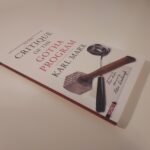The March 26 London demonstration organized by the Trades Union Congress to protest against the Tory-Liberal coalition’s public sector cuts was the largest labor outpouring in over two decades. Various tendencies participating, from reformist to anarchist, are discussed – Editors
 London, England — At least 250,000 people – up to 500,000 according to some reports – attended the March 26 London demonstration organized by the Trades Union Congress to protest against the Tory-Liberal coalition’s public sector cuts. This was undoubtedly the most significant mobilization of working people since the Anti-Poll Tax campaign of more than twenty years ago. Probably most of the trade union members who marched to Hyde Park on Saturday had never before been on a demonstration. According to a report by BBC’s Paul Mason,
London, England — At least 250,000 people – up to 500,000 according to some reports – attended the March 26 London demonstration organized by the Trades Union Congress to protest against the Tory-Liberal coalition’s public sector cuts. This was undoubtedly the most significant mobilization of working people since the Anti-Poll Tax campaign of more than twenty years ago. Probably most of the trade union members who marched to Hyde Park on Saturday had never before been on a demonstration. According to a report by BBC’s Paul Mason,
“The demographics were interesting. Unison – a union which has a reputation in the trade union movement for passivity – had mobilised very large numbers of council workers, health workers and others: many from Scotland and Wales; many from the north of England. Unite likewise, and the PCS seemed capable of mobilising very large numbers… I also saw many small self-selected groups not mobilised by unions: family groups, school groups, speech therapy groups… link
As well as the “official” TUC march from the Thames Embankment to Hyde Park there were three “feeder marches” (all “disowned” by the TUC) from points north, east and south of London, consisting of several thousand radical activists. The north London march from the University of London, which we Hobgoblin reporters turned up for, disassembled before it had even begun, as the various groups of activists broke away and headed off to join up with those coming from elsewhere for “direct action” events in London’s West End.
At 2.00 p.m. the protests in the West End kicked off. A lot of the actions were street-theatre: Soho Square was occupied by a thousand people listening to alternative comedians; Boots the Chemist Oxford Street branch was invaded by people dressed as doctors to protest the £20bn cuts to the National Health Service; crowds of protestors, including performing actors and musicians, occupied various large retailers designated as tax-dodgers, notably the luxury department store, Fortnum & Mason (which was occupied for some hours before police moved in to make arrests).
These actions are described by one of the organizing groups, UKUncut, as “nonviolent direct action” and “creative civil disobedience.” A good deal of “destructive” direct action did take place however, with garbage bins set on fire, stink bombs and fire crackers thrown, and the fronts of banks, shops and hotels spray-painted and smashed. Roving groups belonging to the thousand-strong contingent of “Black Bloc” anarchists (also known as the “Ninjas”) foiled attempts by the police to “kettle” them as they dispersed and moved rapidly through side streets towards their designated “targets.” However, the ill-inspired plan to “Turn Trafalgar Square into Tahrir Square” that evening fizzled and ended with a thousand or so young people being kettled in the square by a huge contingent of police, who made over a hundred arrests. The anarchist groups, who are unfortunately unconcerned about the alienating effect of their actions on public opinion, may well have to reflect on the high price to be paid in prosecutions, resulting in fines and incarcerations – not to mention increased police surveillance and infiltration by the agent-provocateurs of the secret state whose antics in non-violent protest groups have already been widely exposed in the media. link
Most of the “nonviolent direct action” protestors were unhappy about masked anarchists muscling in on their actions and causing damage to premises. UKUncut insist that their protests were “supplementary” to the mass TUC action rather than a challenge to it. link
The fact that the TUC action was called the March for the Alternative raises a number of unresolved issues. Despite the message of “unity” from the TUC organizers, the Hyde Park mobilization represented an uneasy alliance between two different schools of opinion. For the TUC right-wing, which is allied with the Labour Party leadership, the cuts are “premature” and lack “fair” implementation. But some Left-wing trade union leaders and a massive swathe of rank-and-filers oppose ALL of the cuts, and favor instead ending tax-dodges for rich capitalists and big bonuses for bankers bailed out by the tax-payers. To quote Paul Mason again,
“The big takeaway from today is that the trade union movement – though dominated by the public sector – is certainly a force to be reckoned with: what it chooses to do now will be interesting because [Labour Party leader] Miliband’s strategists certainly want nothing to do with the mass, co-ordinated strike movement advocated by [Left-wing union leaders] Serwotka, Len McCluskey etc.”
On Saturday it was clearly the latter (the trade union Left) whose speeches resonated with the majority of the hundreds of thousands of peaceful protestors who marched to Hyde Park. But building on that to work out and organize for an alternative to capitalism has not even begun.
Originally appeared in The Hobgoblin (London), organ of the London Corresponding Committee, an affiliate of the International Marxist-Humanist Organization





0 Comments